30 Years of Risk Well Managed
While PM Environmental may have started as two engineers and a pickup truck, in the 30 years that the company has been in business it has changed with the times. PM has been involved in industry and policy changes that have shaped the environmental landscape into what it is now. The company has taken on many interesting and exciting projects in that time. From brownfields to underground storage tanks and more, PM’s rich history stands as one of the great success stories of the industry.
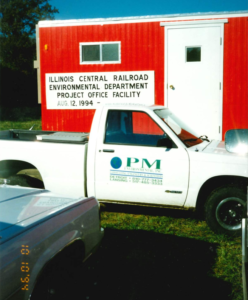
Founders Mike Kulka and Pete Bosanic opened PM Environmental for business in 1992, but it wasn’t until 1994 that the company was able to really gain traction. In the early days, PM mostly dealt with leaking underground storage tanks (USTs). While Michigan’s current UST fund is called MUSTA, in 1994 it was called MUSTFA. This early fund was poorly set up, was running out of funds, and was slated to shut down in June 1995. Industry professionals and their clients were unsure if work completed before then would be paid for. PM had been trying to expand its services into due diligence to compensate, but their efforts weren’t quite effective enough. In August of 1994, a train derailed on the Illinois Central Railroad and spilled 10,000 gallons of tetrachlorethylene (PCE) into a low-lying area. PM mobilized staff to the spill location where they were met by the company’s very first Geoprobe. Staff were trained onsite on how to use the Geoprobe, and they began soil borings to determine the extent of the contamination. The project lasted for over two years and allowed PM to bridge the gap between the demise of the MUSTFA fund and the beginning of consistent due diligence projects. By 1996, PM was operating with a fully functional due diligence team.
In the early 2000s, the United States was forced to come to terms with the fact that there were thousands of abandoned and underutilized contaminated properties. These properties were strewn across every town in the nation, and something needed to be done to encourage redevelopment of these Brownfields. Michigan was an early leader in cleanup efforts and was one of the first states to initiate a brownfields program. At the time, PM was not focused on brownfields, and lagged behind the local competition in that area. When PM began pursuing brownfield work, the company found itself faced with a dilemma. In Michigan, the selection process for consultants to perform the environmental services stated that the consultant had to have prior experience with EPA grants. This experience was very difficult to get, and the early adopters had already staked their claims. How does one go about getting EPA grant experience when the EPA grants demand prior experience?
In 2007, PM strategized and came to the realization that the midsouth states were just beginning to understand the process and get brownfields programs set up. Pete Bosanic and John Hargraves worked together and visited some local municipalities in Alabama, Tennessee, and Mississippi. With PM’s knowledge of the Michigan brownfields program and significant experience completing environmental services and cleanup for private sector projects that were similar to those required for the grant projects, the company knew what they were doing. This gave them an advantage over others in the midsouth. The city of Florence, Alabama hired PM to write an EPA grant application, which ended up being awarded. Subsequently, PM was hired by the city to administer the grant and complete the environmental services. Due to this great success, John Hargraves was able to become a visible expert in the region. PM was able to take this experience back to Michigan. Combined with PM’s extensive due diligence services in completing thousands of environmental site assessments (ESAs), this experience opened the door for PM to be selected as an approved environmental consultant. PM served numerous Michigan municipalities for the following 15 years and PM became a force in the mid-south working on numerous grants for municipalities in Alabama, Kentucky, Mississippi, Tennessee, and Virginia.
When MUSTFA shut down in 1995, Michigan was left without a state leaking UST cleanup fund. Thousands of leaking USTs existed in Michigan. Through Pete Bosanic’s involvement with the Michigan Petroleum Association (MPA), he was selected in 2012 to serve as the environmental consulting industry representative on a UST System Cleanup Advisory Board. The purpose of this board was to evaluate various successful funding approaches in different states and give recommendations to the state of Michigan for developing a new fund. These recommendations were used to develop the current MUSTA fund which was established in 2014. It is funded by a one cent per gallon environmental fee on all refined petroleum sold or imported into the state. It also includes mechanisms to minimize future insolvency. Because of the establishment of the current MUSTA fund, PM’s LUST department has been able to grow significantly.
PM’s most recent pivotal moment occurred in early 2022 when the company announced that it had been acquired by Keystone Capital Management, L.P. CEO Mike Kulka and the rest of the leadership team had been searching out new opportunities for growth when they decided that an investment partnership would best serve the interests of PM’s future. They vetted prospective partners, and in December 2021 the company joined forces with Keystone. This opportunity had another benefit, which was that Keystone also owned a Canadian environmental firm, Pinchin Ltd. The new relationship between Pinchin and PM opens additional avenues for international cooperation, such that clients who have both a Canadian and U.S. presence can be served under one house. With PM’s solid reputation and the addition of these strategic connections, PM looks forward to a dynamic and hopeful future.
PM Through the Years:
1994: 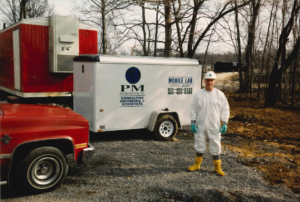
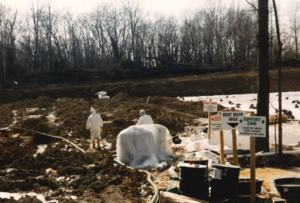
2013: 

2014: 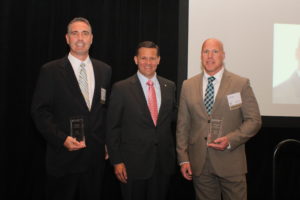

2015: 

2016: 

2017: 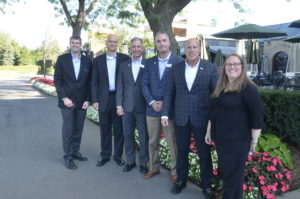

2018: 

2019: 

2020: 

2021: 

2022: 

Publication Details
Date
October 3, 2022



